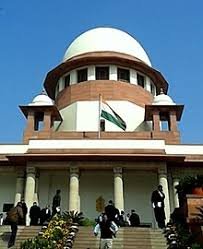Supreme Court of India judgment in a criminal appeal case.The appeals were filed challenging a High Court decision that upheld the death sentence given by a trial court to the appellant for the rape and murder of a child victim. The text details the procedural history of the case, the brief facts of the prosecution’s case based on circumstantial evidence, the arguments presented by both the appellant and the state, and the Court’s analysis of the evidence and the established legal principles for cases based on circumstantial evidence. The document also notes that the appellant passed away during the appeal process, rendering the question of the death sentence execution moot, although the appeals were allowed to continue by his legal heirs to clear his name.
(A) Penal Code, 1860, Section 302 and Section 376 – Rape and Murder – Child victim aged about 9 years – Death sentence – Appeal against conviction – Circumstantial evidence – Appreciation of evidence –Child victim was a friend of the daughter of the accused, and they used to go to Madrassa together – On the date of incident, the child victim was seen with the daughter of the accused – However, she never reached Madrassa – When the child victim did not return home, an extensive search was conducted and since, the child victim was last seen with the daughter of the accused, the needle of suspicion pointed towards the house of the accused, more particularly because his house was situated close by the Madrassa – PW-12 inspected the bathroom by lighting his torch and found a heap of clothes, which was removed by PW-8 and the dead body of the child victim was discovered concealed thereunder – Two stones of the septic tank inside the house of the accused were also found moved – Blood-stained pink colour midiskirt (MO-7), petticoat (MO-8) and black miditop (MO-9) worn by the deceased child victim were identified by her mother(PW-9), recovered by the police officials from the house of the accused and were seized – An underwear(MO11) of the deceased was also found in the kitchen of the house of the accused – Blood stains were found on the cot and floor beneath it – As per the postmortem report, a total of 37 ante mortem injuries were found on the child victim’s body along with injuries on the genitalia, suggestive of forcible penetrative sexual assault – The cause of death was opined to be manual compressive and ligature constrictive strangulation – As per the FSL report, the midiskirt worn by child victim, the dhoti of the accused and cotton gauze collected from the scene of crime contained human spermatozoa and semen – The hair collected from the crime scene matched with the hair of the deceased child victim – DNA report clearly proved that the DNA profile of the semen stains found on the midiskirt (MO-7) matched with that of the accused – Further, the blood stains found on the cot and beneath it were that of the deceased child victim – The slippers, hard-board writing pad, plastic cover of the writing pad, grey coloured pen and light rose small plastic carry bag belonging to the deceased child victim, as identified by her mother (PW-9), were recovered in furtherance of the voluntary disclosure statementof the accused – Held that the chain of incriminating circumstances required to bring home the guilt of the accused is complete in all aspects – Prosecution has been able to prove the guilt of the accused appellant by fulfilling the five golden principles (Panchsheel) and that the circumstances present before us, taken together establish conclusively only one hypothesis that being the guilt of the accused appellant that the accused had committed forcible and violent sexual assault on the child victim and, thereafter, strangled and killed her – Question of execution of death sentence awarded to the appellant has been rendered otiose, considering the fact that he has passed away
(Para 25 to 27 and 31)
(B) Circumstantial evidence – Appreciation of evidence – Principles that courts must adhere to while appreciating and evaluating evidence in cases based on circumstantial evidence enunciated as follows:
(i). The testimony of each prosecution and defence witness must be meticulously discussed and analysed. Each witness’s evidence should be assessed in its entirety to ensure no material aspect is overlooked.
(ii). Circumstantial evidence is evidence that relies on an inference to connect it to a conclusion of fact. Thus, the reasonable inferences that can be drawn from the testimony of each witness must be explicitly delineated.
(iii). Each of the links of incriminating circumstantial evidence should be meticulously examined so as to find out if each one of the circumstances is proved individually and whether collectively taken, they forge an unbroken chain consistent only with the hypothesis of the guilt of the accused and totally inconsistent with his innocence.
(iv). The judgment must comprehensively elucidate the rationale for accepting or rejecting specific pieces of evidence, demonstrating how the conclusion was logically derived from the evidence. It should explicitly articulate how each piece of evidence contributes to the overall narrative of guilt.
(v). The judgment must reflect that the finding of guilt, if any, has been reached after a proper and careful evaluation of circumstances in order to determine whether they are compatible with any other reasonable hypothesis.
(Para 30)
Abdul Nassar V. State Of Kerala
Supreme Court: 2025 INSC 35: (DoJ 07-01-2025)








